Another week, another bunch of announcements! To stay up to date on what’s new, check out this latest cleantech product roundup:
670 W solar panel
China-based PV manufacturer Trina Solar has launched a new Vertex solar module with a power output of 670 W. The new product, which features a conversion efficiency of 21.6%, was conceived for large-scale solar power projects and is the most powerful panel manufactured by the company to date.
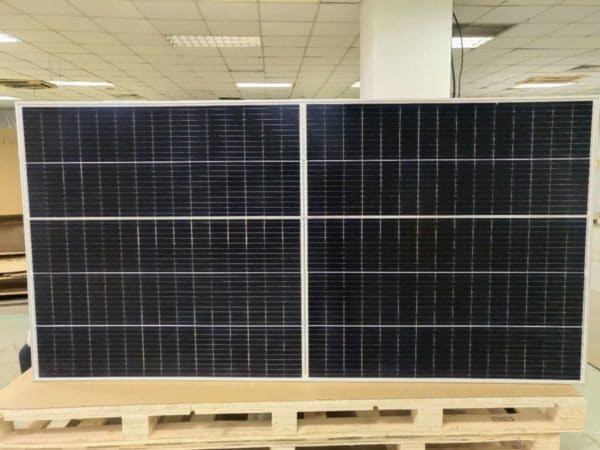
Trina said the new panel is based on 210 mm wafers, non-destructive cutting, high-density interconnection, and multi-busbar (MBB) technology. Trina launched its 635-660 W Vertex series in August. A month earlier, it had unveiled a 600 W version of the Vertex panel. More info available here.
DER product compliance
To accelerate the delivery of distributed energy resources (DER) such as solar and storage products that comply with IEEE 1547-2018, the U.S. national standard for DER technology, the SunSpec Alliance has released the SunSpec SVP Dashboard test platform to its 125 member organizations.
SunSpec SVP Dashboard is a Microsoft Windows application that validates DER devices for compliance to IEEE 1547-2018 communication requirements, including the SunSpec Modbus interface. These requirements were mandated for the first time in the 2018 version of the IEEE 1547 standard, providing the ability for utility grid operators to remotely control DER systems to enhance grid health and expand grid capacity. SunSpec said research indicates state-level interconnection rules for solar and energy storage will require compliance with IEEE 1547-2018 starting in January 2022. More info available here.
Granular power data
REsurety, a provider of valuation analytics and risk management services to buyers and sellers of renewable energy, has added hourly power price and generation granularity to its REmap tool. The tool helps decision makers identify value, understand risk, and optimize off-take and hedging strategies. The new Hourly Data Explorer allows users to investigate the hourly performance of thousands of operational and synthetic projects.
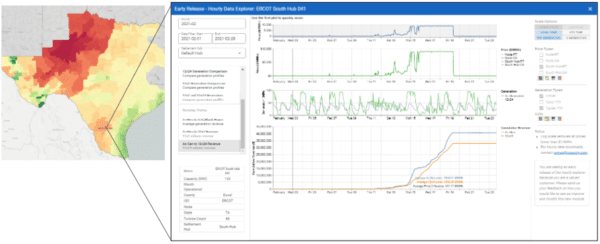
The company said the mid-February crisis in Texas illustrated how hourly generation during high-priced hours spells the difference between big wins and big losses for clean energy buyers and sellers. REsurety launched its map-based tool in May 2020 as an SaaS product for the renewable power market. More info available here.
Tracker showcase
Array Technologies announced the creation of the Array Tech Research Center, a site dedicated to researching, developing, and field testing the manufacturer’s ground-mount solar tracker technology. Located in Phoenix, Arizona, the center will serve as a proving ground where developer and EPC customers can explore product prototypes designed to address utility-scale solar challenges, including foundation costs, site grading requirements, large module compatibility, and installation time.
Array said the center will showcase extended row configurations, new optimized foundation tracker systems, tool-less module mounting technology, and rough terrain tracker solutions. Customers and partners are encouraged to contact their Array customer service representative if interested in scheduling a tour. More info available here.
DERMS upgrade
Energy software provider Smarter Grid Solutions (SGS) said it has responded to the growing demand for grid flexibility with the release of ANM Strata 3.1, the latest development of its flagship distributed energy resources management system (DERMS) product.
The new version of SGS’ DERMS software is designed to make it quicker and easier for utilities and DER fleet operators to deliver flexibility services. Thanks to enhanced cloud deployment capabilities, the product can be leveraged by a wider range of clean energy operators, including those managing resources in electric heating and cooling, renewable generation, energy storage, and smart EV charging infrastructure. More info available here.
Fuel-flexible generator
Mainspring Energy Inc. has launched the Mainspring Linear Generator, a fully dispatchable and fuel-flexible power generation technology for commercial and industrial buildings, utilities, and microgrids. Mainspring’s technology, based on research originally conducted by the company’s co-founders in a thermodynamics laboratory at Stanford University, is designed to meet clean energy and power resiliency demands.
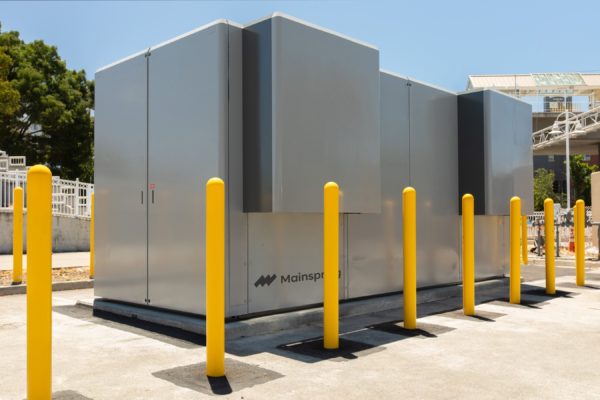
The product’s design uses a low-temperature reaction of air and fuel to drive magnets through copper coils to efficiently produce electricity. The company said this design, combined with the company’s adaptive control software, enables near-zero NOx emissions, full dispatchability, and seamless switching between natural gas and renewable fuels like biogas and hydrogen. The product’s load-following capability also means it pairs well with onsite solar or battery storage, dispatching power when needed. More info available here
End-of-warranty assessments
Engineering company Solar Support now offers independent plant and equipment end-of-warranty assessment services for utility-scale solar PV asset owners. The company said the services include onsite review of system and equipment performance, as well as detailed documentation owners can use to secure support before EPC and manufacturer warranties lapse. This work builds upon Solar Support’s inverter predictive analysis program launched last fall.
The company said warranty length varies—typically two years for construction and five years for equipment such as central inverters. Given a 28- to 35-year plant lifespan, asset owners could face full responsibility for decades of maintenance and repair after warranties expire. More info available here.
Hydrogen energy storage
T2M Global recently was awarded a $1.3 million project from the California Energy Commission (CEC) to develop and validate its Advanced Electrolyzer System (AES) technology, a 100 kW-class green electrolytic hydrogen energy storage module. When successful, the company claimed, the electrical system efficiency of this hydrogen electrolyzer will double compared to some existing products in the market today. The AES system can be powered by using excess electricity or other waste energy streams. CEC solicited proposals to fund the development of emerging energy storage technologies to diversify its portfolio. More info available here.
Deep-cycle battery
KiloVault unveiled its new 2V 1000 XLC lead carbon, sealed AGM, deep-cycle energy storage battery. Designed for optimum performance in partial-state-of-charge applications, the XLC is well suited for high-demand off-grid or battery backup applications. The company said the XLC provides flexible and reliable storage for smart grids, hybrid power supply systems, and microgrids.
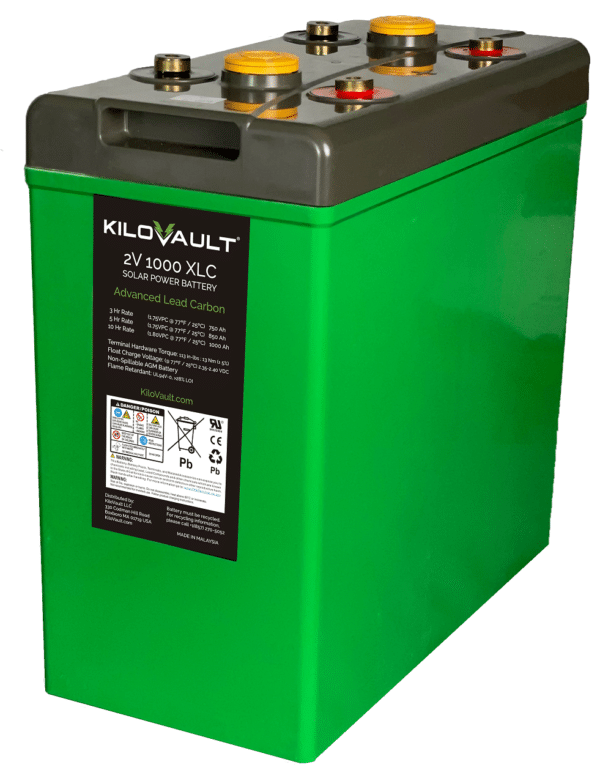
The XLC offers the same function as KiloVault’s PLC 2100 battery, but is designed to handle greater energy demands with 1,000 amp-hours of energy storage. Each 2-Volt XLC has a capacity of 2000 Wh, and up to four 48 V strings can be wired in parallel, for a maximum battery bank size of 24 batteries. More info available here.
Bi-directional EV charger
Rhombus Energy Solutions received certification of its bi-directional 125 kW DC electric vehicle (EV) fast charger to the Underwriter Laboratories 1741-SA standard. The standard defines the design and testing requirements to certify that bi-directional, grid-tied, “smart” inverters and EV chargers can be safely used to support distributed generation grid services and applications.
This latest certification now provides medium- and heavy-duty (M/HD) EV fleet operators with two Rhombus products to meet their needs: the Rhombus 125 kW charger and the previously certified Rhombus 60 kW charger. Since both of these chargers and their associated dispensers are bi-directional certified, they can now be used in vehicle-to-everything and unidirectional charging applications. More info available here.
Output-boosting coating
SunDensity, developer of the Photonic Smart Coating (PSC) technology that increases solar power output and has additional applications in consumer electronics and architectural glass, announced a research agreement with the University of Rochester’s Institute of Optics. As part of the one-year agreement, the University of Rochester in New York will combine its experience, skills, and ability in optical sciences with SunDensity’s goal to speed the manufacturing process and design of its nano-optical coating equipment.
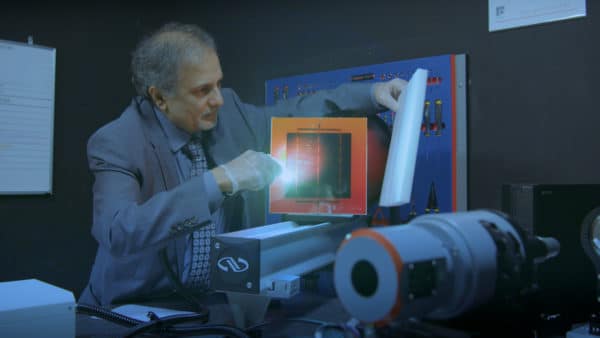
SunDensity is a Luminate NY cohort company. The startup was named “Company of the Year” and awarded $1 million in follow-on funding during the accelerator’s third competition last fall. SunDensity plans to continue using its funding to scale up its manufacturing process in Rochester. More info available here.
Power station for solar, storage
Ingeteam, an international technology group specializing in electric power conversion, announced its new INGECON SUN FSK power station designed for large-scale solar plants and battery energy storage systems. The station’s nominal power allows it to reach 7.2 MW of medium-voltage output power.

Ingeteam said the new design makes installation and connection work in the field as easy as possible. The company said the integrated solution can be transported by land and by sea, either placed directly on the trailer of a truck or inside a 40-foot container, thus allowing it to be installed anywhere in the world. The first units of this full skid type power station have been manufactured in Navarre, Spain, and are already being supplied to various photovoltaic projects. More info available here.
Have a new cleantech product announcement? Send it to joseph.bebon@pv-magazine.com
This content is protected by copyright and may not be reused. If you want to cooperate with us and would like to reuse some of our content, please contact: editors@pv-magazine.com.









By submitting this form you agree to pv magazine using your data for the purposes of publishing your comment.
Your personal data will only be disclosed or otherwise transmitted to third parties for the purposes of spam filtering or if this is necessary for technical maintenance of the website. Any other transfer to third parties will not take place unless this is justified on the basis of applicable data protection regulations or if pv magazine is legally obliged to do so.
You may revoke this consent at any time with effect for the future, in which case your personal data will be deleted immediately. Otherwise, your data will be deleted if pv magazine has processed your request or the purpose of data storage is fulfilled.
Further information on data privacy can be found in our Data Protection Policy.